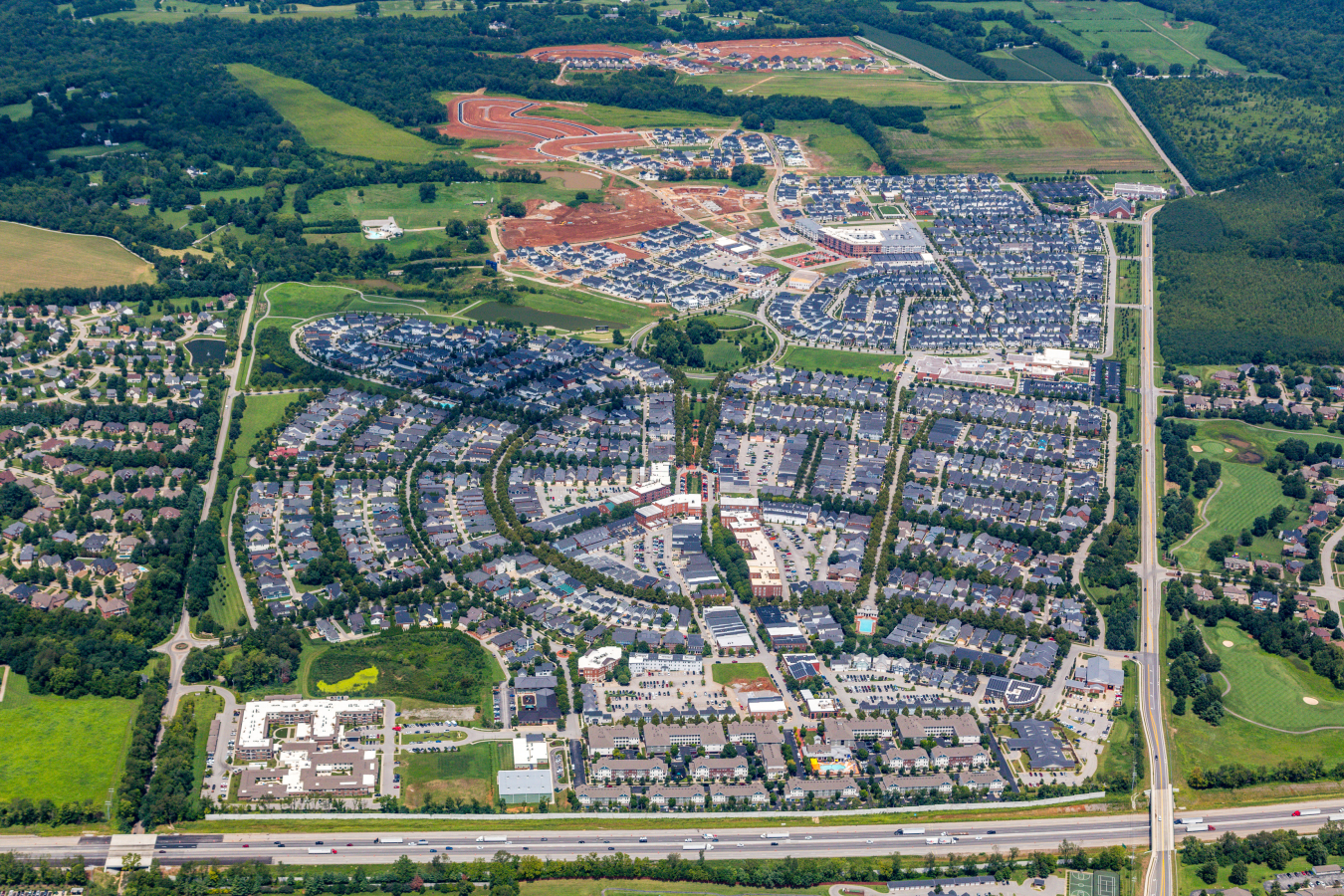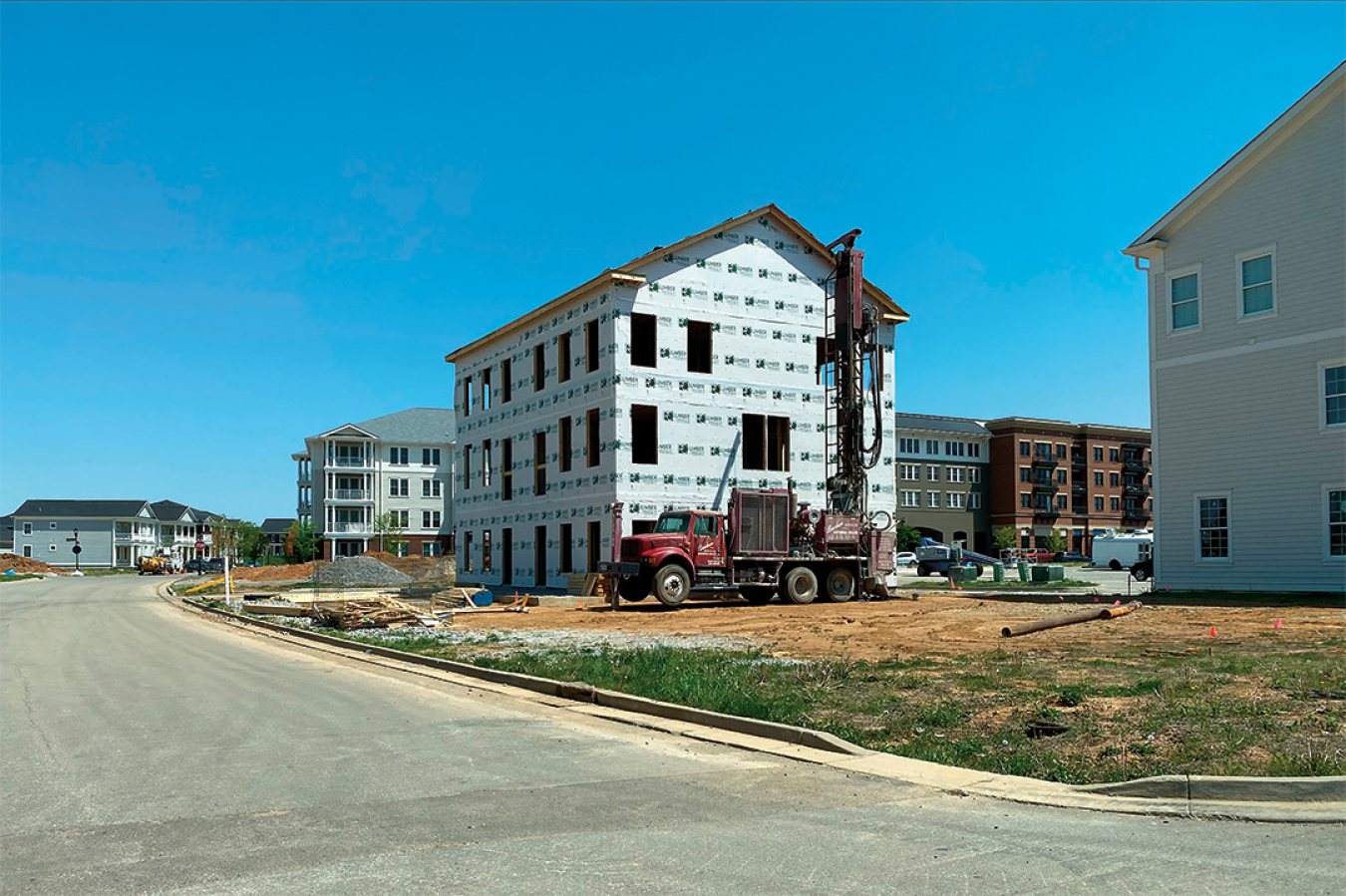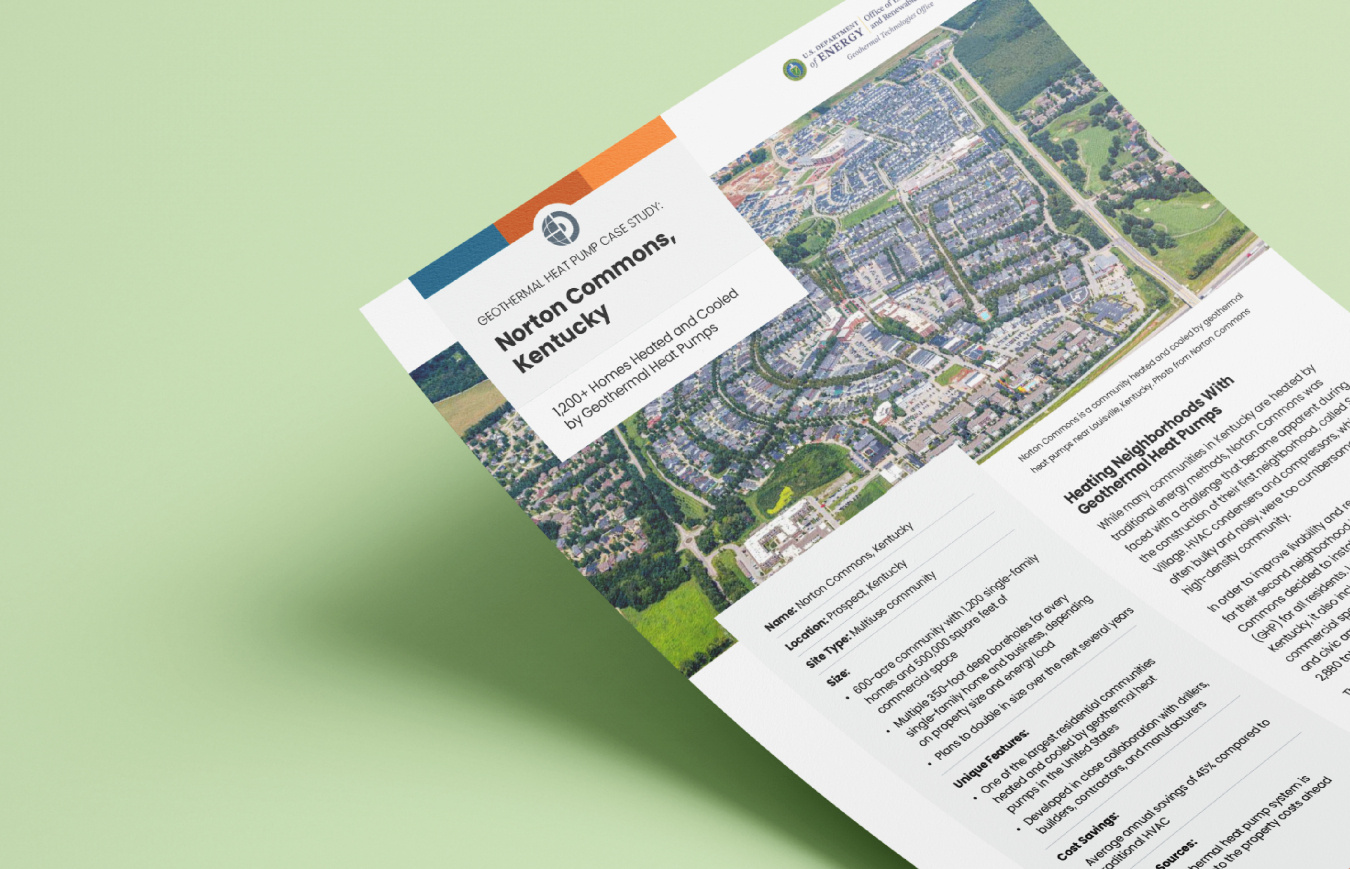
Norton Commons is a community heated and cooled by geothermal heat pumps near Louisville, Kentucky. Photo from Norton Commons
Fast Facts
Location: Prospect, Kentucky
System Size:
- 600-acre community with 1,200 single-family homes and 500,000 square feet of commercial space
- Multiple 350-foot-deep boreholes for every single-family home and business, depending on property size and energy load
Unique Features:
- One of the largest residential communities heated and cooled by geothermal heat pumps in the United States
Download the full case study for additional fast facts.
Heating Neighborhoods With Geothermal Heat Pumps
While many communities in Kentucky are heated by traditional energy methods, Norton Commons was faced with a challenge that became apparent during the construction of their first neighborhood, called South Village. HVAC condensers and compressors, which are often bulky and noisy, were too cumbersome for this high-density community.
In order to improve livability and reduce sound pollution, Norton Commons North Village decided to install geothermal heat pumps (GHP) for all its residents. Located just east of Louisville, Kentucky, it also includes over 500,000 square feet of commercial space in addition to parks, recreational areas, and civic amenities that support two distinct villages of 2,880 total residences.
The North Village neighborhood boasts a feature not seen in any similarly sized community in the United States—a vertical, closed-loop geothermal heat pump system for every individual home, business, and community resource. This style of system was chosen due to the wide variety of mixed-use structures, including large and small residences, living/workspaces, stores, schools, and a church.
A More Dynamic Community Without the Noise
The collaborative nature of the building process helped both existing and new residents of Norton Commons remain open to the idea of a community heated and cooled by geothermal heat pumps. After a lot is sold, it takes one day to drill the looping boreholes that make up the geothermal heat pump system before the owner takes possession. The quantity of boreholes can vary with property size and energy demand with a minimum of two for a standard single-family home.
Drilling companies work hand-in-hand with 15 different builders to maintain the architectural standards of Norton Commons, and with the geothermal heat pump system manufacturer and its distributor, to ensure that each installation is performed correctly. The process takes one day before the home is built and can support a 4- to 5-ton heat pump that is usually situated underneath the garage.

Geothermal heat pump drilling at a new housing development in Norton Commons, North Village, Kentucky. Photo from Norton Commons
Cost Savings:
- Average annual savings of 45% compared to traditional HVAC
Funding Sources:
- Each geothermal heat pump system is integrated into the property costs ahead of construction
The dense neighborhoods of Norton Commons were particularly well-designed for geothermal heat pumps, as many of the single-family homes are only 6 feet apart. With traditional condenser units producing approximately 60-65 dB of noise, several clustered condensers can create a large amount of sound pollution. Switching to geothermal heat pump systems has created more peaceful neighborhoods across Norton Commons, improving the quality of life for its residents.
Energy and Cost Savings
At Norton Commons, the cost of individual geothermal heat pump units varied due to a wide variety of building sizes, but the energy savings and the reduced maintenance costs on a per-lot basis usually lead to a payback period of just 6 to 7 years for most systems in the community.
A Future Bolstered by Geothermal Heat Pumps
Aside from cost, one of the biggest surprises for Norton Commons was how eager buyers were for this type of innovative energy solution. New buyers readily accepted the installation of geothermal heat pump systems for their new residences, while the broader local community was excited to hear about the enhanced energy efficiency and the adoption of advanced energy solutions within the development.
Norton Commons found that connecting their builders with the geothermal heat pump distributor personally for a “first look” at the technology was instrumental to success, as was prioritizing media interviews about the energy-efficient systems for public awareness.
North Village continues to grow, and Norton Commons expects the number of individual residences with geothermal heat pump systems to double in the coming years. The systems help support the aesthetics and peaceful nature of the neighborhoods, which will continue to be a draw for new residents.
“We were kind of surprised with the infrequent questions about geothermal and why we were mandating this type of system because in larger structures the cost was sometimes higher. But people were excited, agreeing very quickly.”
Marilyn Patterson, General Counsel and Marketing Director at Norton Commons
Contacts:
For questions about this case study, contact Marilyn Patterson, MPatterson@NortonCommons.com.
For any website technical issues or general questions about geothermal heat pumps, contact DOE.Geothermal@ee.doe.gov.
Printable Version
Download the printable Norton Commons case study or visit the Geothermal Heat Pump Case Studies page to see more examples of geothermal heat pumps in action.


